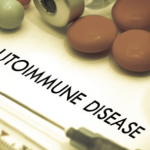Several cytokines are important in the pathology of both SLE and atherosclerosis. Patients with SLE have a distinct interferon (IFN) signature indicative of overexpression of type 1 IFN-regulated genes. The level of expression of these genes correlates with SLE disease activity.
Type 1 IFNs are also associated with increased thrombus formation. Interleukin-6 (IL-6) has also been shown to have an important role in SLE pathogenesis. Mouse studies have suggested that IL-6 has both protective and disease-promoting functions in atherosclerosis. IL-10 is believed to have dual roles in SLE—working as an antiinflammatory, and at the same time promoting the proliferation and differentiation of B cells. Although IL-10 appears to be largely disease promoting in SLE, it seems to be largely protective in CVD.
The authors conclude their paper with the hope that such an analysis may aid in the discovery of novel targets for intervention. Specifically, novel, immune-based therapies for CVD may not only be effective in the prevention of CVD, but may also act as immunomodulators for patients with SLE, the authors suggest. (posted 3/20/15)
Lara C. Pullen, PhD, is a medical writer based in the Chicago area.
